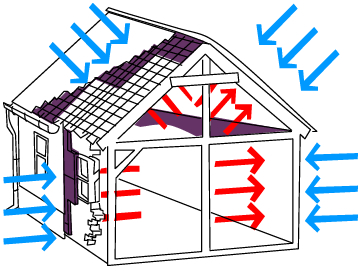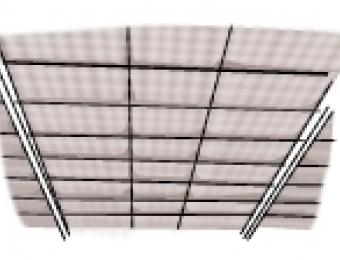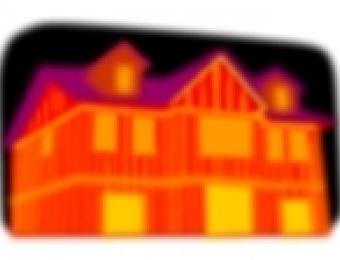
How heat travels and how insulation stops this
Heat is transmitted in three different ways – convection, conduction and radiation. Conduction and convection types of heat are both dealt with using bulk insulation. This type of insulation is made of low density materials, normally incorporating trapped air pockets (which don't conduct heat very well).
Radiant heat can be reflected, and this is where reflective insulation like foil barriers come into their own. By themselves, reflective insulation only deals with radiant heat, so it's often used in combination with bulk insulation to provide maximum coverage. Reflective insulation is particularly useful in hotter climates in the north of Australia.
The way heat can be transferred in or out of a home
Heat can pass through walls, roofing, windows and doors, the floor and even through your framework. Using different materials and insulation helps to control how much heat is allowed through.
Thermal bridging - heat transferred through wall studs and other structural elements - can also account for a significant loss (or gain) of heat even if the rest of the house is well insulated, and is often overlooked in the initial design phase. Thermal bridging is very hard to fix, so should be properly accounted for very early in planning.
Where does heat travel most in a home?
The most common way for heat to escape from a home is through the ceiling. Heat rises, so it's natural for it to seek escape there first. Heat lost through the ceiling can account for as much as 25-35%* of heat loss. Other areas where heat is lost include through windows and doors (11-20%), through the walls and floor (10-20% each) and through air draughts (15-20%).
Heat entering the home again comes mainly through the ceiling (25-35%) but windows account for just as much heat gain (25-35%) and walls also play a larger role (15-25%), as all are directly exposed to the sun. Heat gained through the floor is as much as is lost (10-20%), but can increase if you have a sun-exposed concrete slab floor. Hot winds blowing through as draughts can also contribute to heat entering your home (5-15%).
How heat loss translates into energy usage
A cold home in winter will need extra heating. Likewise, a sweltering home in summer will mean you're far more likely to use the air conditioner. Regardless of how efficient your heating or cooling system is, having to use it more often will result in higher energy consumption. Good insulation is designed to regulate the temperature in your home, reducing your need for artificial heating and cooling.
Given the rising cost of power, the fact that insulation is now mandatory in newly constructed homes and that even retrofitted insulation is pretty cheap, it makes good sense to ensure your home's well insulated. The energy savings will easily repay the cost of your insulation in the long term.





